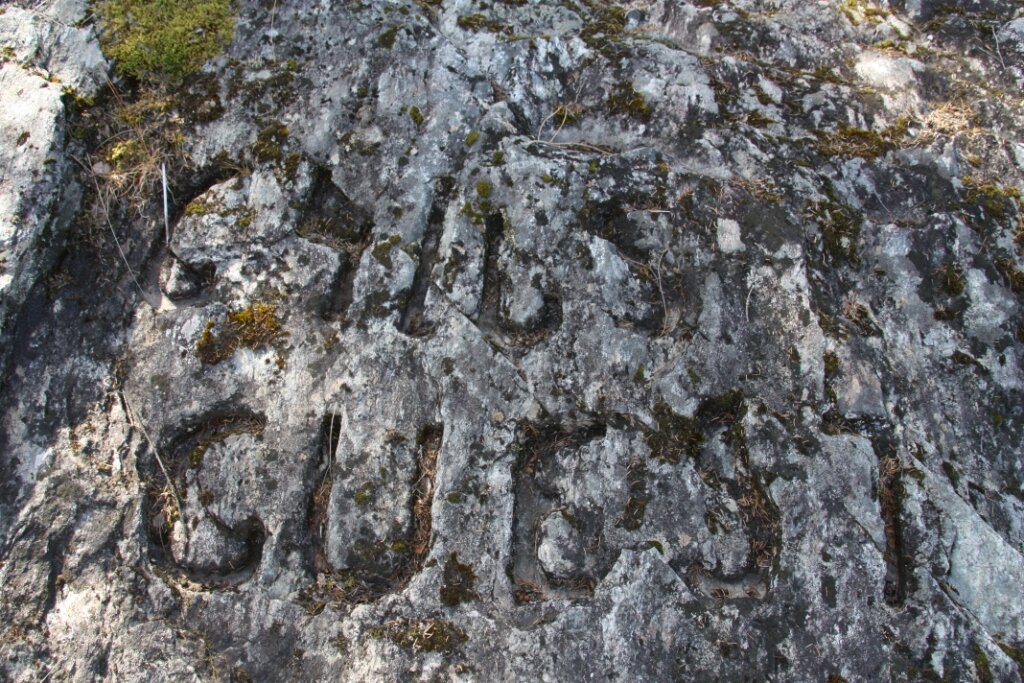The salmon order that left its mark
Rock-hard facts from 1894 are still visible on a rock shed at Namsen. Photo: Tone Løvold.
In the 1800s, many English people visited Norway. They came to climb mountains, walk on glaciers, hunt and fish for salmon. They were rich and had time. The term lakselord originates from this time. Here is a story about one of them.
July 20, 1894 was a big day for the salmon lord Thomas Merthyr Guest. Early that day, he had caught a 36-pound (16.3 kg) salmon from the boat of rower and farm owner Peder Anton Gartland. In the afternoon, they went fishing on the other side of Namsen, towards Rossethylla. It was a satisfied salmon lord who sat in the boat.
Lakselorden sets a personal record
Rossethylla belonged to another landowner than Peder A. Gartland, but Mr. Guest had bought the right to fish in the entire river. Just outside a bergodde, the lord's fly was bitten. It was clear that this was a big salmon. Mr. Guest had not known such power before, and he had fished a lot in the Namsen. It was not easy to get the salmon up, but after a lot of good work from both rower and fisherman, the salmon finally came out of the water. And what a salmon! 64 pounds (29 kilos) was the final weight. It was a new personal best for Mr. Guest. This was also the largest salmon caught on sport fishing equipment in Namsen up to that point.
Lakselorden would not be forgotten
Mr. Guest was ecstatic! How was he going to immortalize this moment? He did two things to secure evidence and make sure he would be remembered for posterity.
Firstly, he sent for a photographer. The nearest man with a camera was seven miles away! Photographer Thome jumped on his bike and pedaled off.
Secondly, he bought Bergodden from the landowner for 400 spesidaler! In those days, you could get a whole farmhouse for that price. Here he decided that his name, the weight of the salmon and the year should be carved into the rock so that everyone could see it.
Thomas Merthyr Guest leased the same fishing rights in Namsen for 30 years.
A scribble in stone
At the top, you can see the text that Peder Gartland is said to have spent three days carving. On the rock a little further away we find an unfinished version. But why is there a "draft" carved in stone? Perhaps Mr. Guest wasn't happy with the work? Who knows?
Mr. Guest, a handsome man
Here's one of the photos photographer Thome took after his seven-mile bike ride. Note Mr. Guest's attire and fishing rod.
Clothes made of wool fabric and sturdy leather boots were common. The fishing rod was made of wood (greenheart or hickory), and the fishing line was made of silk. The fishing line was made of brass and weighed well over half a kilo.
Times have changed. Anglers now use much lighter equipment: waders and fishing jackets made of Gore-Tex, carbon fiber fishing rods and fishing lines made of plastic (PVC). A fishing reel the size of the one Mr. Guest is holding in the photo can now weigh less than 300 grams. And the bragging photos - they're taken with a cell phone.



